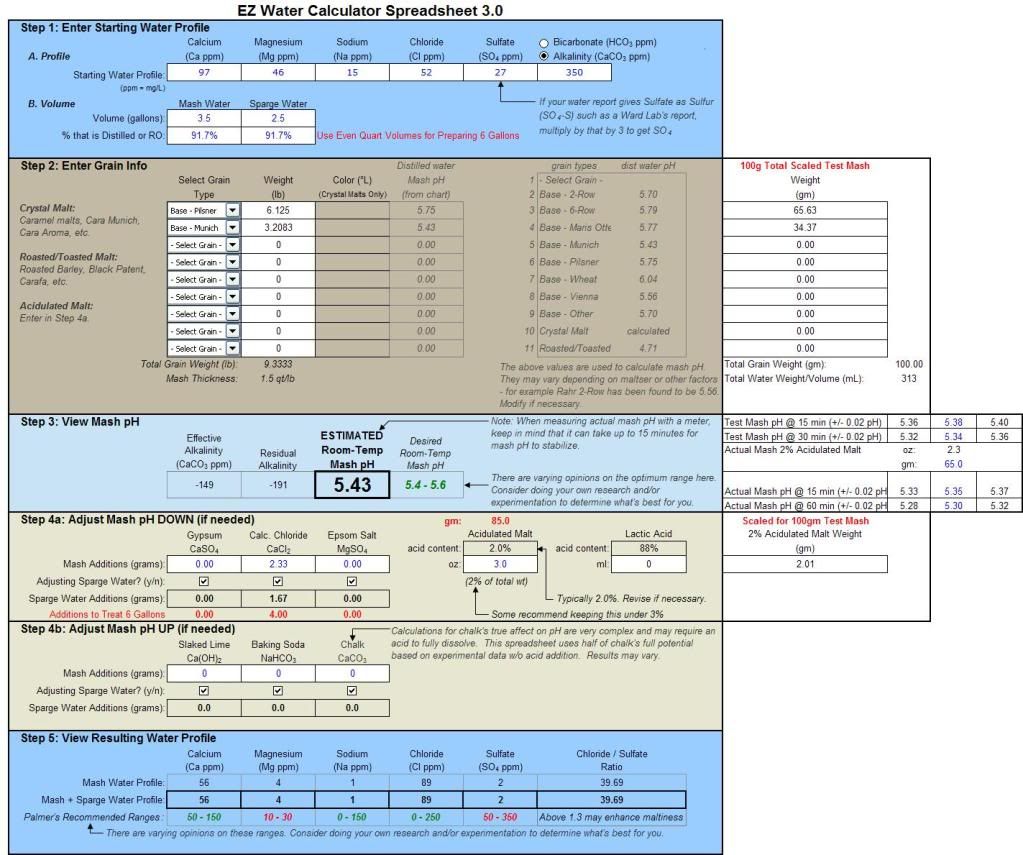DSmith
Well-Known Member
I've noticed that over an hour my pH meter read 3.97 in the 4.01 buffer and 7.04 in the 7.01 buffer. The pH meter was washed with DI water and most excess water was blotted away to avoid contaminating the calibration solutions. Calibration solutions were kept at constant temperature.
Is it accurate to correct for pH drift by determining a linear formula (y=mx+b) based on the actual readings? Example from my last mash:
Actual Reading = 3.97
Actual Reading = 7.04
m = (7.01-4.01)/(7.04-3.97) = 0.9772
b = 4.01-.9772*3.97 = 0.1305
Corrected pH = 0.9772*Measured pH + 0.1305
Measurements taken right after calibration need no correction. But checking for drift before or after a group of measurements could help determine the actual pH a little closer... The biggest error would be when BOTH ends of the calibration drift positive or negative (measured pH - calibration pH), unlike my example.
Can anyone comment if linear correction for drift is the best way?
Is it accurate to correct for pH drift by determining a linear formula (y=mx+b) based on the actual readings? Example from my last mash:
Actual Reading = 3.97
Actual Reading = 7.04
m = (7.01-4.01)/(7.04-3.97) = 0.9772
b = 4.01-.9772*3.97 = 0.1305
Corrected pH = 0.9772*Measured pH + 0.1305
Measurements taken right after calibration need no correction. But checking for drift before or after a group of measurements could help determine the actual pH a little closer... The biggest error would be when BOTH ends of the calibration drift positive or negative (measured pH - calibration pH), unlike my example.
Can anyone comment if linear correction for drift is the best way?



